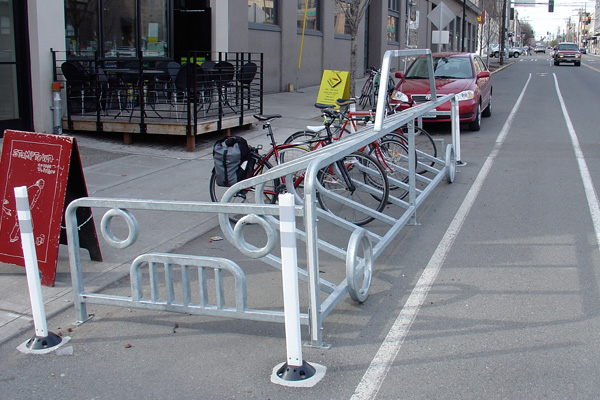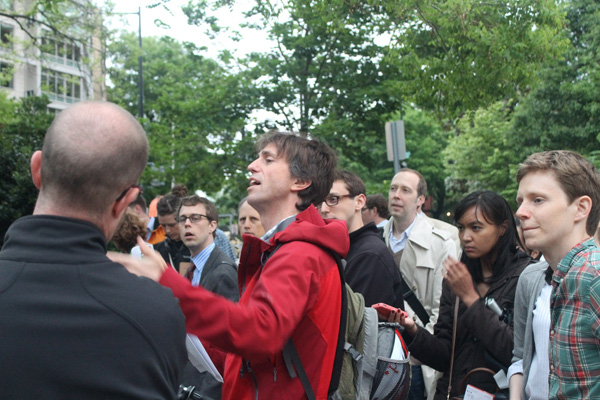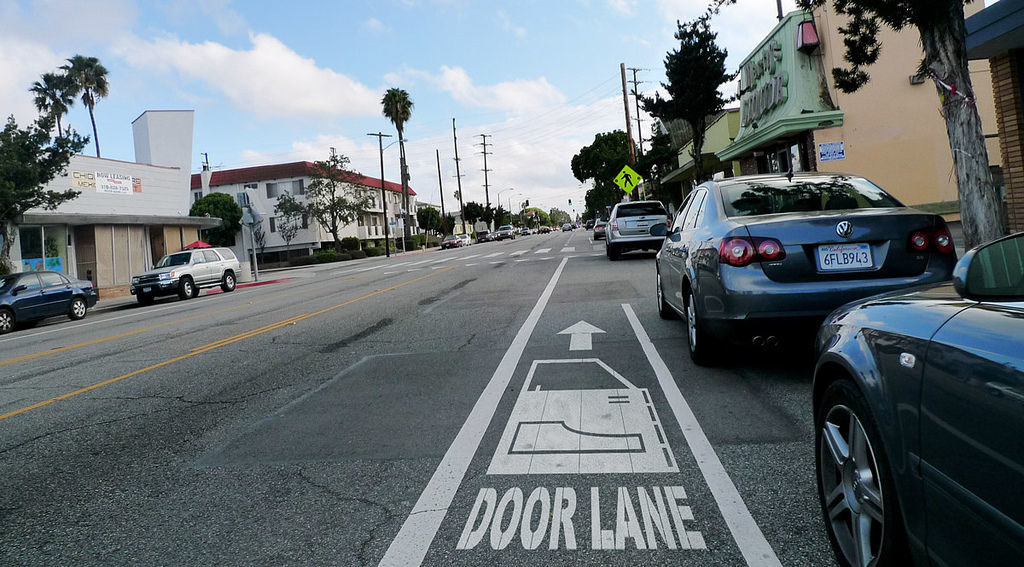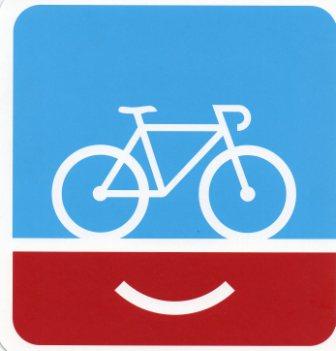Top image: Gary Rides Bikes Foter. Article cross-posted from PeopleForBikes. Authored by Kristin Butcher & Zoe Kircos.
Well-thought-out bicycling routes can change a city. By offering a variety of ways to get around by bike, towns encourage active communities and create practical opportunities for everyday folks to choose bikes over cars. Facilities like protected bike lanes, city-wide bike routes, trails, and separated paths give prospective riders more choices when it comes to running errands, getting to work, or taking the kids to school. Whether your town is a bike mecca or still has a long way to go, here are five tips to improve bicycling infrastructure in your community.
1. Make sure bike riders are represented at community input meetings.

Photo credit: Chester County Planning Commission.
Though these meetings can be hard to make for families and 9-to-5ers, having people prepared to speak in support of a project can make or break its future. When you attend, speak early and be concise; the first speakers often set the tone for the perceived support of a project. If you’re not sure what to say, consult with the organization you’re representing to develop talking points.
2. Write letters to the editor.

Photo credit: Jon S.
New bicycling infrastructure proposals can be a hot topic in the local media. Respond to articles about upcoming projects with positive letters to the editor. If you own or manage a business, speak from a businessperson’s perspective if possible. Writing letters to the editor in support of bicycling infrastructure lets the community and its leaders know that the project is desirable, while adding balance to any outspoken naysayers.
3. Engage businesses.

Photo credit: VeloBusDriver.
If you’re a patron of a business affected by a bicycling project, let the owner or manager know that you enjoy being able to ride to their business. Encourage them to add or improve their bike parking, or simply show your appreciation for existing bike-friendly facilities. Some business owners assume that everyone drives to their business until they learn otherwise. Stumptown Coffee in Seattle (above) dedicated an entire parking spot to serve their customers on bikes.
4. Build partnerships.

Photo credit: Inhabitat Blog.
Talk to existing bike groups in your community – this might include advocacy groups, bike clubs or people who just want to get together and ride. Find out what others are already doing and discuss ways to leverage or extend their efforts so time isn’t wasted reinventing the wheel. Don’t forget to reach out to other communities that benefit from safer bicycling and walking routes. For instance, if the proposed route is near a school, create widespread support of the project by partnering with Safe Routes to School programs, neighborhood groups, and local parents. Several times a year, the San Francisco Bicycle Coalition sets up a tent (above) to distribute information to residents on bicycling in the city.
5. Seek guidance from the bicycle/pedestrian coordinator.

Photo credit: (WABA).
This position could be housed in the department of transportation, public works, or someplace else in your municipality or county government. Speaking to the coordinator can help you determine the process for identifying and prioritizing projects, suggesting new projects, and most importantly, help you find out what kind of community support is most effective. Mike Goodno, Washington, D.C.'s DOT bicycle program specialist, (above) took fellow DDOT staffers out earlier last year to walk the new M Street cycletrack.
At PeopleForBikes, we know how important making bicycling better in your community is to you. Stay tuned to our blogs and emails and we will let you know about important bicycling meetings and events in your area.









